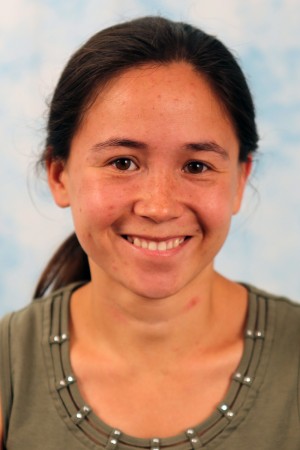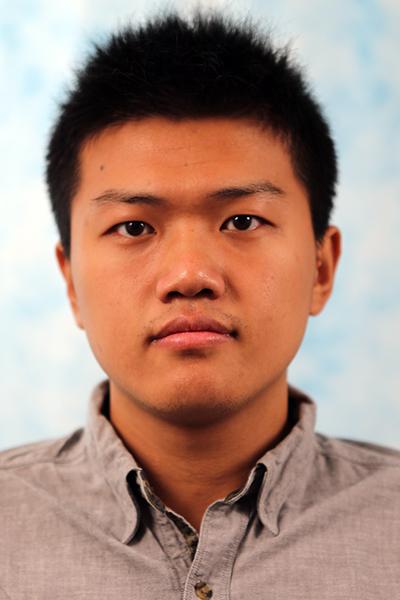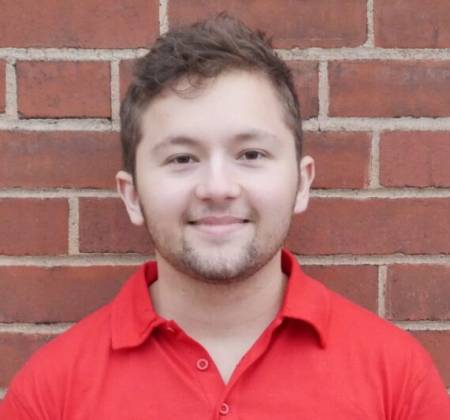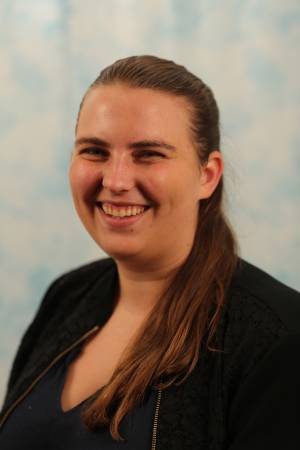PhD Speaking Qualifier
Modeling Coupled Human-Robot Motion for Provable Safety
Abstract: Guide robots that help users who are blind or low vision navigate through crowds and complex environments show promise for improving accessibility in public spaces. These robots must provide real-time safety guarantees for the users, which requires accurate modeling of their behavior in the context of closely coupled human-robot motion. This model must also [...]
Diminished Reality for Close Quarters Robotic Telemanipulation
Abstract: In robot telemanipulation tasks, the robot itself can sometimes occlude a target object from the user's view. We investigate the potential of diminished reality to address this problem. Our method uses an optical see-through head-mounted display to create a diminished reality illusion that the robot is transparent, allowing users to see occluded areas behind [...]
Learning Compositional Radiance Fields of Dynamic Human Heads
Meeting ID: 942 4671 0665 Passcode: jkhzoom Abstract: Photorealistic rendering of dynamic humans is an important capability for telepresence systems. Recently, neural rendering methods have been developed to create high-fidelity models of humans and objects. Some of these methods do not produce results with high-enough fidelity for driveable human models (Neural Volumes) whereas others have [...]
An Experimental Design Perspective on Model-Based Reinforcement Learning
Abstract: In many practical applications of RL, it is expensive to observe state transitions from the environment. For example, in the problem of plasma control for nuclear fusion, computing the next state for a given state-action pair requires querying an expensive transition function which can lead to many hours of computer simulation or dollars of [...]
Learning Model Preconditions for Planning with Multiple Models
Abstract: Different models can provide differing levels of fidelity when a robot is planning. Analytical models are often fast to evaluate but only work in limited ranges of conditions. Meanwhile, physics simulators are effective at modeling complex interactions between objects but are typically more computationally expensive. Learning when to switch between the various models can [...]
Reconstructing common objects to interact with
Abstract: We humans are able to understand 3D shapes of common daily objects and interact with them from a wide range of categories. We understand cups are usually cylinder-like and we can easily predict the shape of one particular cup, both in isolation or even when it is held by a human. We aim to [...]
A causal framework to diagnose and fix issues with doors
Abstract: Many animals, such as ravens, (and a fortiori humans) exhibit a great deal of physical intelligence that allows them to solve complex multi-step physical puzzles. This ability indicates an understanding or a faculty to represent causality and mechanisms, understand when something goes wrong, and figure out how to deal with it. As a step [...]
Designing Whisker Sensors to Detect Multiple Mechanical Stimuli for Robotic Applications
Abstract: Many mammals, such as rats and seals, use their whiskers as versatile mechanical sensors to gain precise information about their surroundings. Whisker-inspired sensors on robotic platforms have shown their potential benefit, improving applications ranging from drone navigation to texture mapping. Despite this, there is a gap between the engineered sensors and many of the [...]
Towards Complex Robot Motions with Reinforcement Learning
Abstract: Reinforcement learning has shown to be a powerful tool for decision-making problems. In this talk, we present the opportunities and challenges of enabling increasingly complex robot behavior with reinforcement learning. First, we present a system that combines reinforcement learning and extrinsic dexterity to solve a novel task of “occluded grasping”. To reach an occluded [...]
Search-based Path Planning for a High Dimensional Manipulator in Cluttered Environments Using Optimization-based Primitives
Abstract: In this work we tackle the path planning problem for a 21-dimensional snake robot-like, navigating a cluttered gas turbine for the purposes of inspection. Heuristic search-based approaches are effective planning strategies for common manipulation domains. However, their performance on high-dimensional systems is heavily reliant on the effectiveness of the action space and the heuristics [...]
Vision-Based Tactile Sensor Design using Physics Based Rendering
Abstract: Tactile sensing has seen a rapid adoption with the advent of vision-based tactile sensors. Vision-based tactile sensors provide high resolution, compact and inexpensive data to perform precise in-hand manipulation and human-robot interaction. However, the simulation of tactile sensors is still a challenge. Simulation is a critical tool in the development of robotic systems. In [...]
Kernel Density Decision Trees
Abstract We propose kernel density decision trees (KDDTs), a novel fuzzy decision tree (FDT) formalism based on kernel density estimation that improves the robustness of decision trees and ensembles and offers additional utility. FDTs mitigate the sensitivity of decision trees to uncertainty by representing uncertainty through fuzzy partitions. However, compared to conventional, crisp decision trees, [...]
Energy-based Joint Pose Estimation for 3D Reconstruction
Abstract: In this talk, I will describe a data-driven method for inferring camera poses given a sparse collection of images of an arbitrary object. This task is a core component of classic geometric pipelines such as structure-from-motion (SFM), and also serves as a vital pre-processing requirement for contemporary neural approaches (e.g. NeRF) to object reconstruction. [...]
NeRF for Robotics
Abstract: In this talk I'll describe how recent advances in neural rendering and novel view synthesis - namely NeRF - can be leveraged by robotic agents to improve performance in manipulation tasks. Specifically, I'll argue that NeRF can enable robotic policies to: (1) generalize to new viewpoints; (2) perceive specular and reflective surfaces in a [...]
Robust Reinforcement Learning via Genetic Curriculum
Abstract: Achieving robust performance is crucial when applying deep reinforcement learning (RL) in safety critical systems. Some of the state of the art approaches try to address the problem with adversarial agents, but these agents often require expert supervision to fine tune and prevent the adversary from becoming too challenging to the trainee agent. While [...]
Mouth Haptics in VR using a Headset Ultrasound Phased Array
Abstract: This talk is the same one I will be presenting at the ACM CHI Conference on Human Factors in Computing Systems on May 2nd. Paper abstract: Today’s consumer virtual reality (VR) systems offer limited haptic feedback via vibration motors in handheld controllers. Rendering haptics to other parts of the body is an open challenge, [...]
TIGRIS: An Informed Sampling-based Algorithm for Informative Path Planning
Abstract: In this talk I will present our sampling-based approach to informative path planning that allows us to tackle the challenges of large and high-dimensional search spaces. This is done by performing informed sampling in the high-dimensional continuous space and incorporating potential information gain along edges in the reward estimation. This method rapidly generates a [...]
Trajectory Optimization for Thermally-Actuated Soft Planar Robot Limbs
Abstract: Practical use of robotic manipulators made from soft materials requires generating and executing complex motions. We present the first approach for generating trajectories of a thermally-actuated soft robotic manipulator. Based on simplified approximations of the soft arm and its antagonistic shape-memory alloy actuator coils, we justify a dynamics model of a discretized rigid manipulator [...]
Time-of-Flight Radiance Fields for Dynamic Scene View Synthesis
Abstract: Neural networks can represent and accurately reconstruct radiance fields for static 3D scenes (e.g., NeRF). Several works extend these to dynamic scenes captured with monocular video, with promising performance. However, the monocular setting is known to be an under-constrained problem, and so methods rely on data-driven priors for reconstructing dynamic content. We replace these [...]
Combining vision-based tactile, proximity, and global sensing for robotic manipulation
Abstract: I will begin by describing our work on visual servoing a manipulator and localizing objects using a robot-mounted suite of vision and vision-based tactile sensors, our results, algorithms used, and lessons learned. We show that by collocating tactile, and global (e.g. an RGB(D) camera) sensors, our setup can perform better than using each type [...]
Design, Modeling and Control for a Tilt-rotor VTOL UAV in the Presence of Actuator Failure
Abstract: Providing both the vertical take-off and landing capabilities and the ability to fly long distances to aircraft opens the door to a wide range of new real-world aircraft applications while improving many existing applications. Tiltrotor vertical take-off and landing (VTOL) unmanned aerial vehicles (UAVs) are a better choice than fixed-wing and multirotor aircraft for [...]
Lessons Learned from Creating Low-Cost Dexterous Soft Robot Hands
Abstract: Soft robot hands have shown promising results when it comes to dexterous grasping and manipulation. Compared to their rigid counterparts, soft hands can be manufactured for a fraction of the cost and offer robustness to uncertainty due to their inherent compliance. Unfortunately, the design and fabrication of soft robot hands is still a time-consuming [...]
Modern Trajectory Forecasting Methods Lack Social Awareness
Abstract: We present a thorough evaluation and analysis of state-of-the-art (SOTA) human trajectory forecasting methods with respect to metrics for safe and socially-aware prediction, e.g., collision rate, in addition to traditional displacement metrics, e.g., average displacement error. First, we introduce a system for trajectory classification which is used to evaluate the strengths and weaknesses of [...]




















